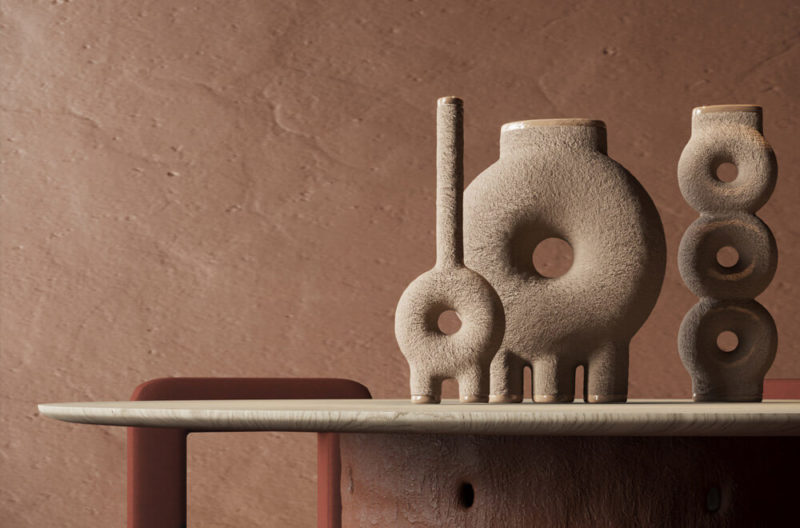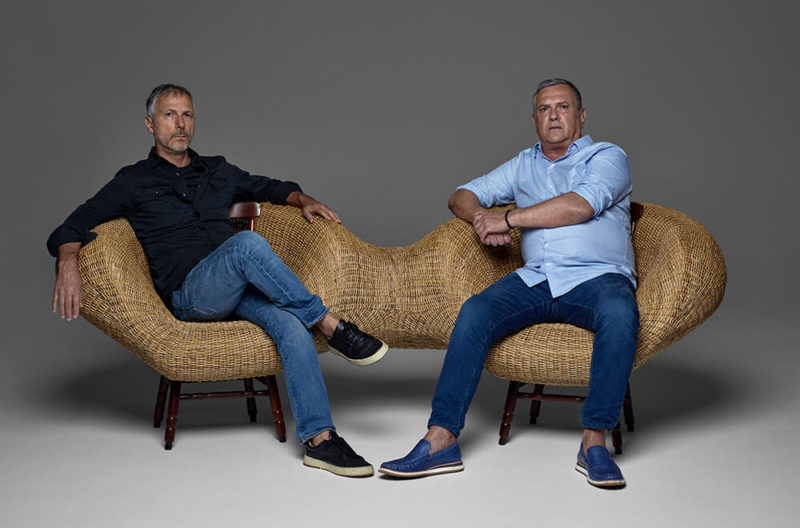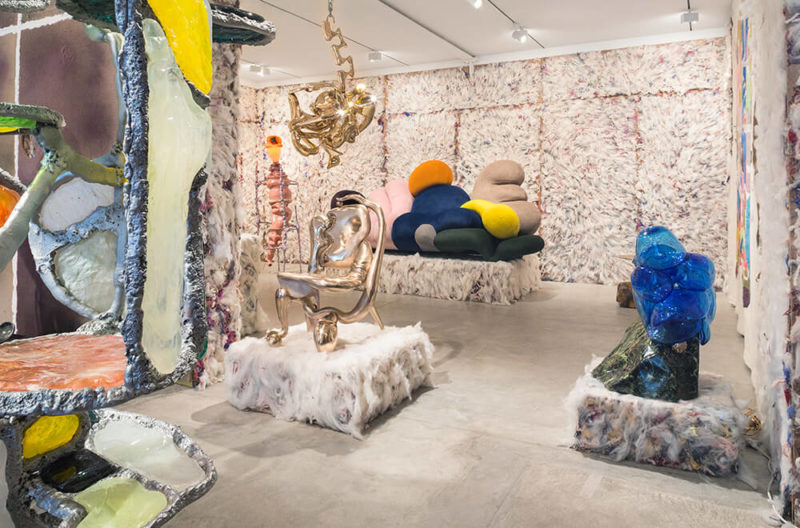Collectible 2020 roundup
Designers showed their flair for upcycling and innovation, visitor attendance was up, and the organisers held their nerve under the cloud of coronavirus.
Vanderborght Building, Brussels
5th – 8th March 2020
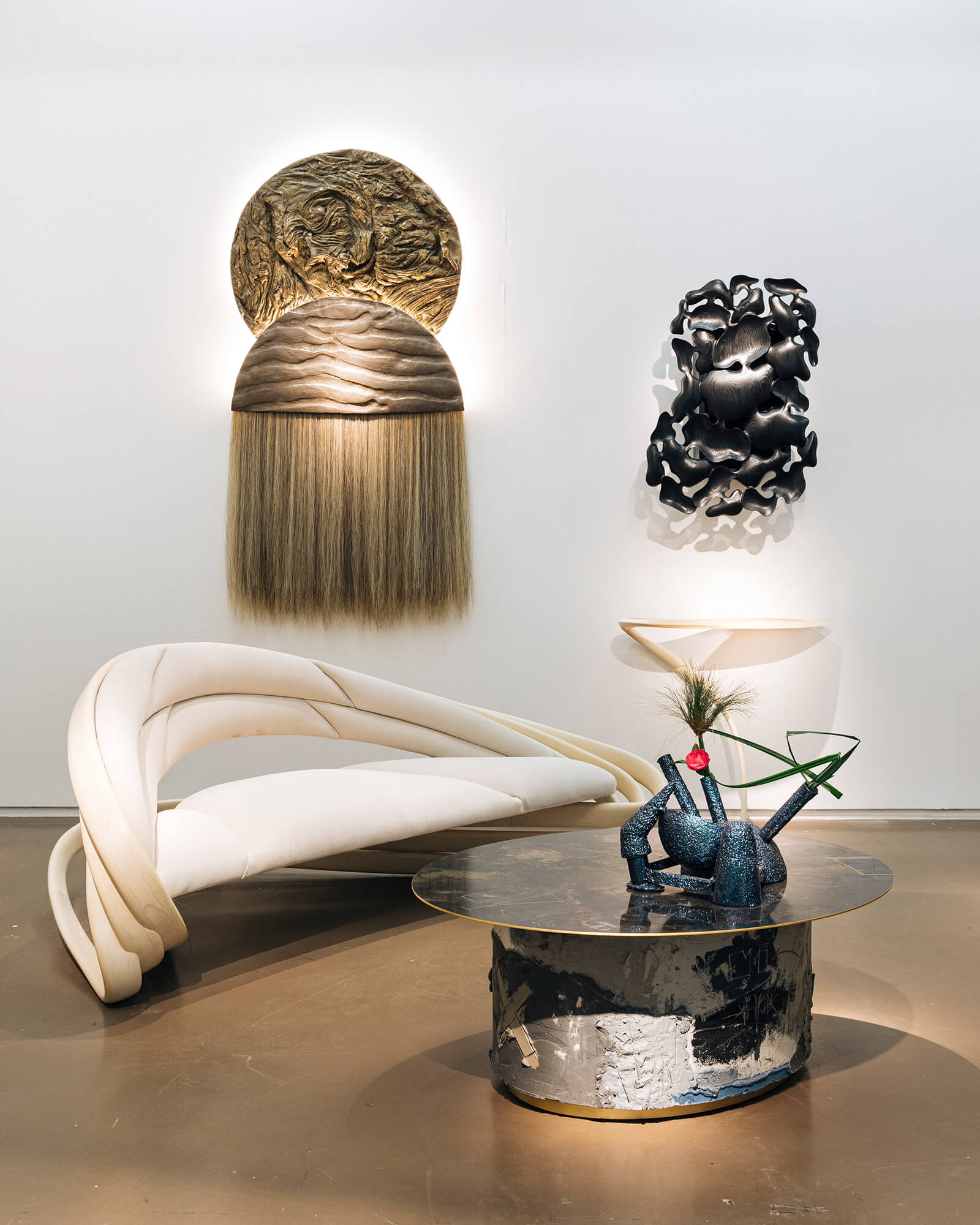
Todd Merrill Studio at Collectible 2020
COURTESY: Courtesy of Todd Merrill Studio, NYC
AT THE THIRD edition of Collectible, the contemporary design fair held in the 1930s Vanderborght Building in central Brussels, hand sanitisers greeted visitors at the VIP desk. Yet the organisers put on a brave face despite the spread of Covid-19 in Europe. “We followed each and every official guidance and recommendation from the federal public service for public health with regards to the coronavirus to ensure the safety of both our exhibitors and visitors,” the fair’s cofounders Liv Vaisberg and Clélie Debehault say. “We only had one cancellation on the exhibitors’ side and the fair attracted just over 18,000 visitors, compared to just under 15,000 last year.”
As well as Blue Mountain School from London’s East End dropping out, Sumer Singh and Karen Mercedes from Canadian brand Mtharu cancelled their trip due to Covid-19, leaving a Belgian representative in charge. Among Mtharu’s pieces on display was the ‘New Primitives Lamp’ (2020), priced at €14,350. Comprising bulbous, LED-lit shapes on tall, curvy legs, the Surrealism-inspired lamp was made by applying reclaimed aluminium shavings from CNC milling onto the steel substructure.
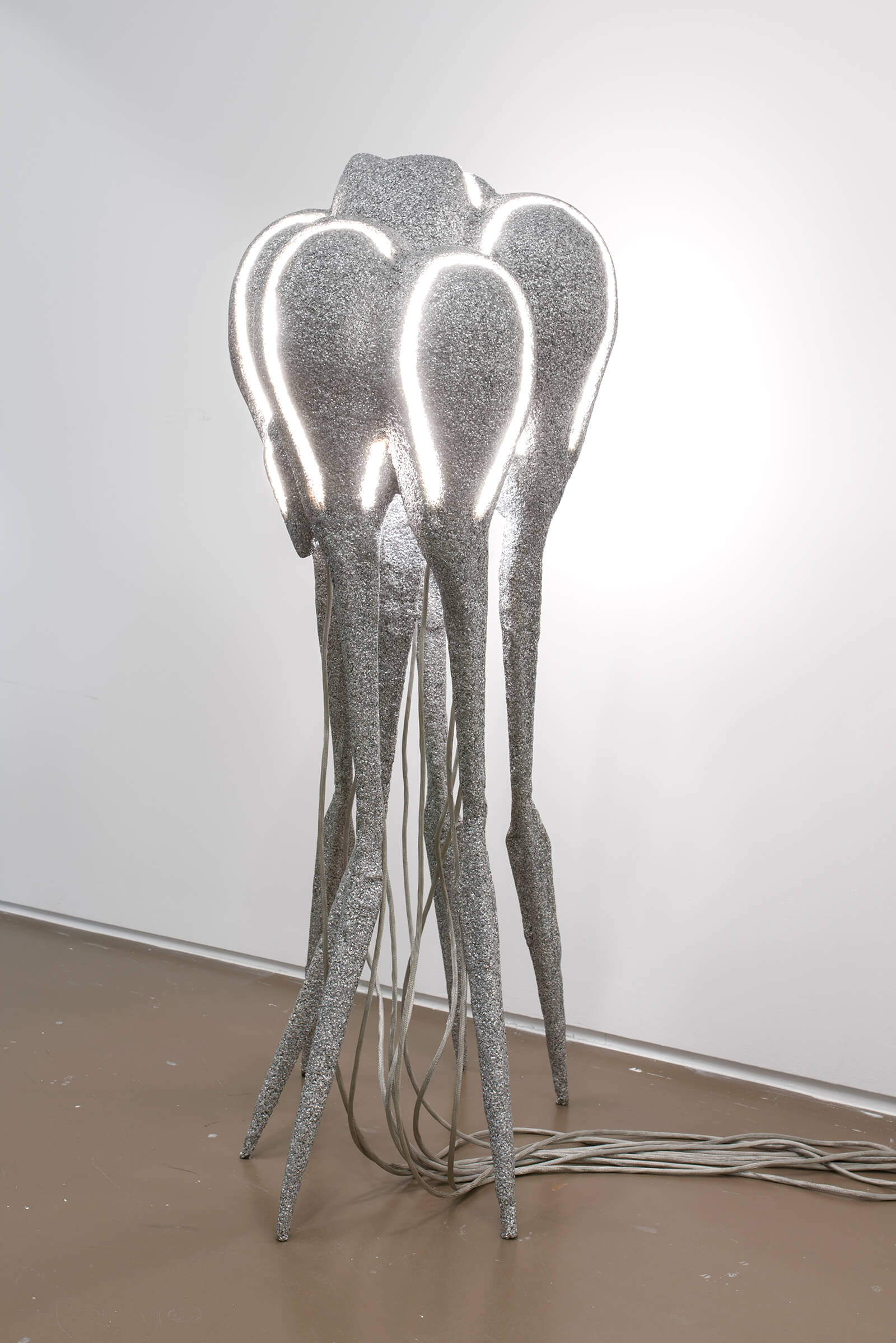
Mtharu, ‘New Primitives Lamp’, 2020
COURTESY: Mtharu, Canada
The evolving design trend of recycling left-over materials into new works was observed across Collectible. Plasticiet, the Rotterdam-based studio founded by Marten van Middelkoop and Joost Dingemans, unveiled gleaming, silvery furniture made from recycled plastic. With their swirling patterns, the cabinet, stool and chair (priced at €5,000) in the ‘Mother of Pearl’ collection (2020) bear an uncanny resemblance to natural stone. They are intended to demonstrate that plastic waste, as a raw material, can rival high-end materials. The idea originated from a field trip to India and seeing craftsmen making products from recycled plastic bottles, cotton clothes and metal parts.
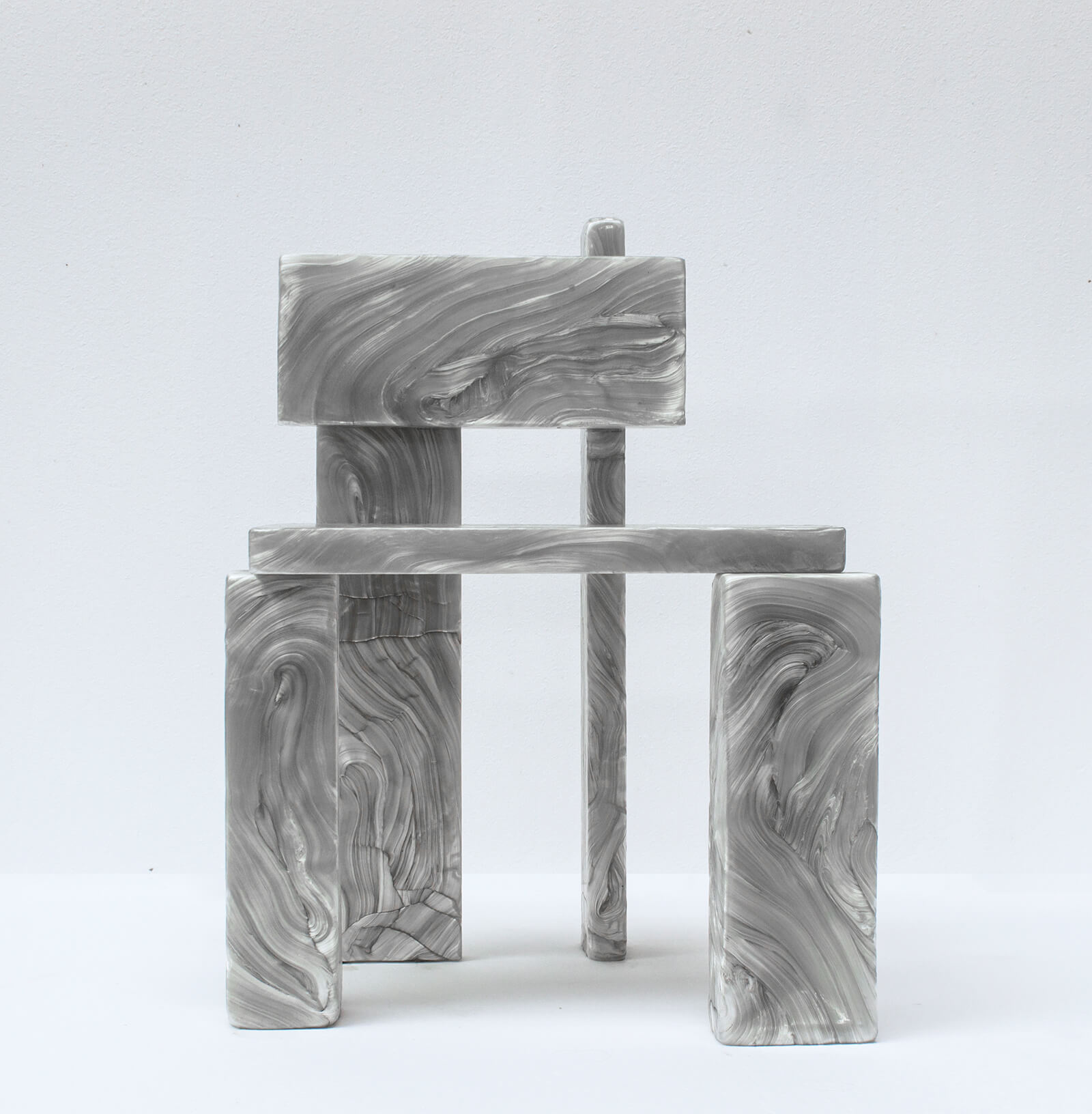
Plasticiet, ‘Mother Of Pearl’ chair, 2020
COURTESY: Plasticiet, Rotterdam
Several works by other designers on show across the 115 exhibitors, spread over the building’s five floors, also featured upcycling. Jousse Entreprise from Paris presented Florence Doléac and the Maximum collective’s collaborative piece ‘Maxidodo’ (2019), a red-and-green bed sculpture priced at €18,000, made by upcycling the Vauban security barriers used to control crowds during French protests.

Florence Doléac and Maximum, ‘Maxidodo’, 2019
COURTESY: Galerie Jousse Entreprise, Paris / PHOTOGRAPH: Paul Nicoué
Then on Rademakers Gallery from Amsterdam was Diederik Schneemann’s incredible ‘Matchbox King Clock’ (2020), priced at €28,500, made from thousands of boxes of matches meticulously arranged to evoke a grandfather’s clock. “He collects old things like matches, postcards and smurfs and brings them together to make new things,” gallery director Pien Rademakers says.
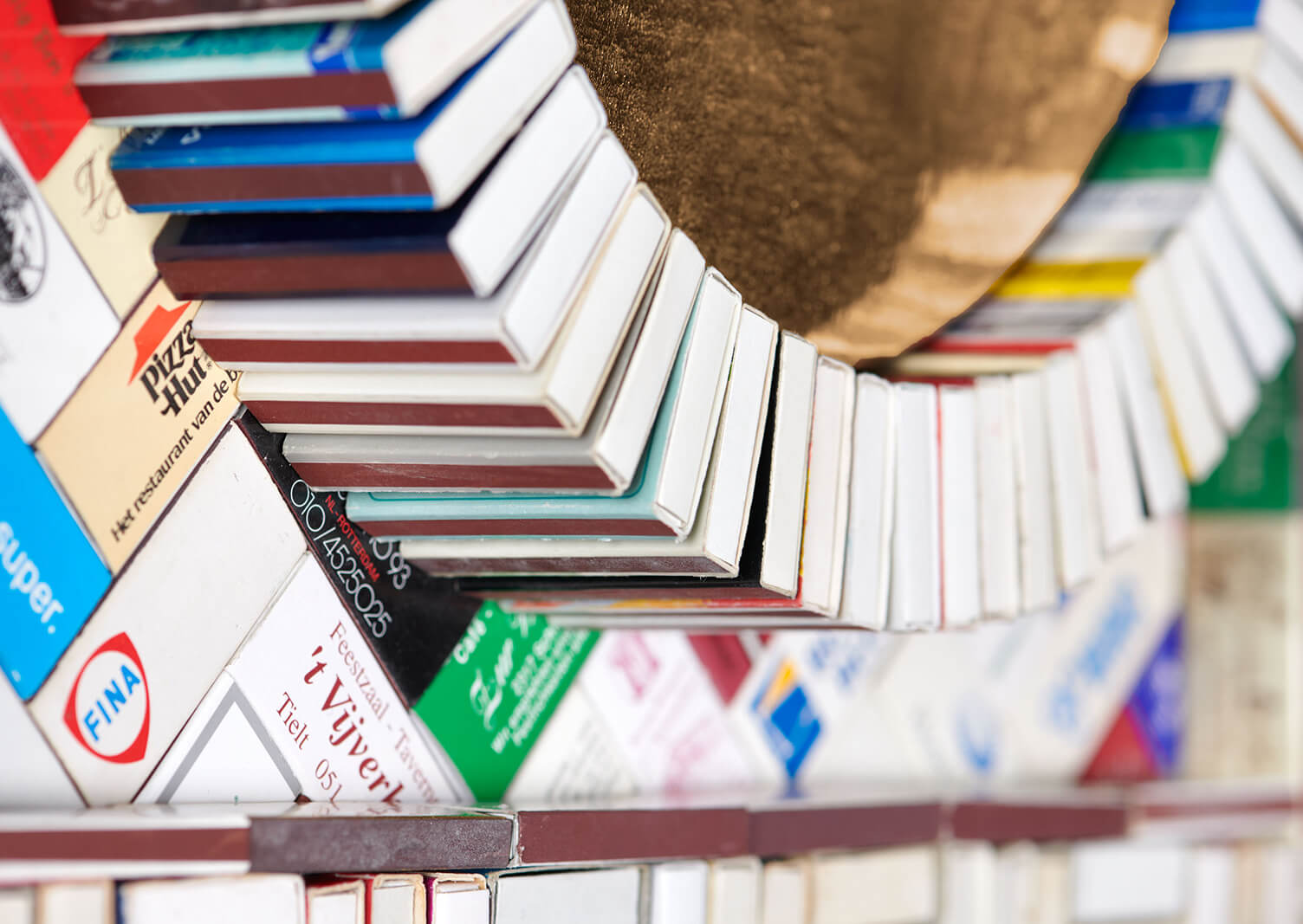
Diederik Schneemann, ‘Matchbox King Clock’, 2020 (detail)
COURTESY: Rademakers Gallery, Amsterdam
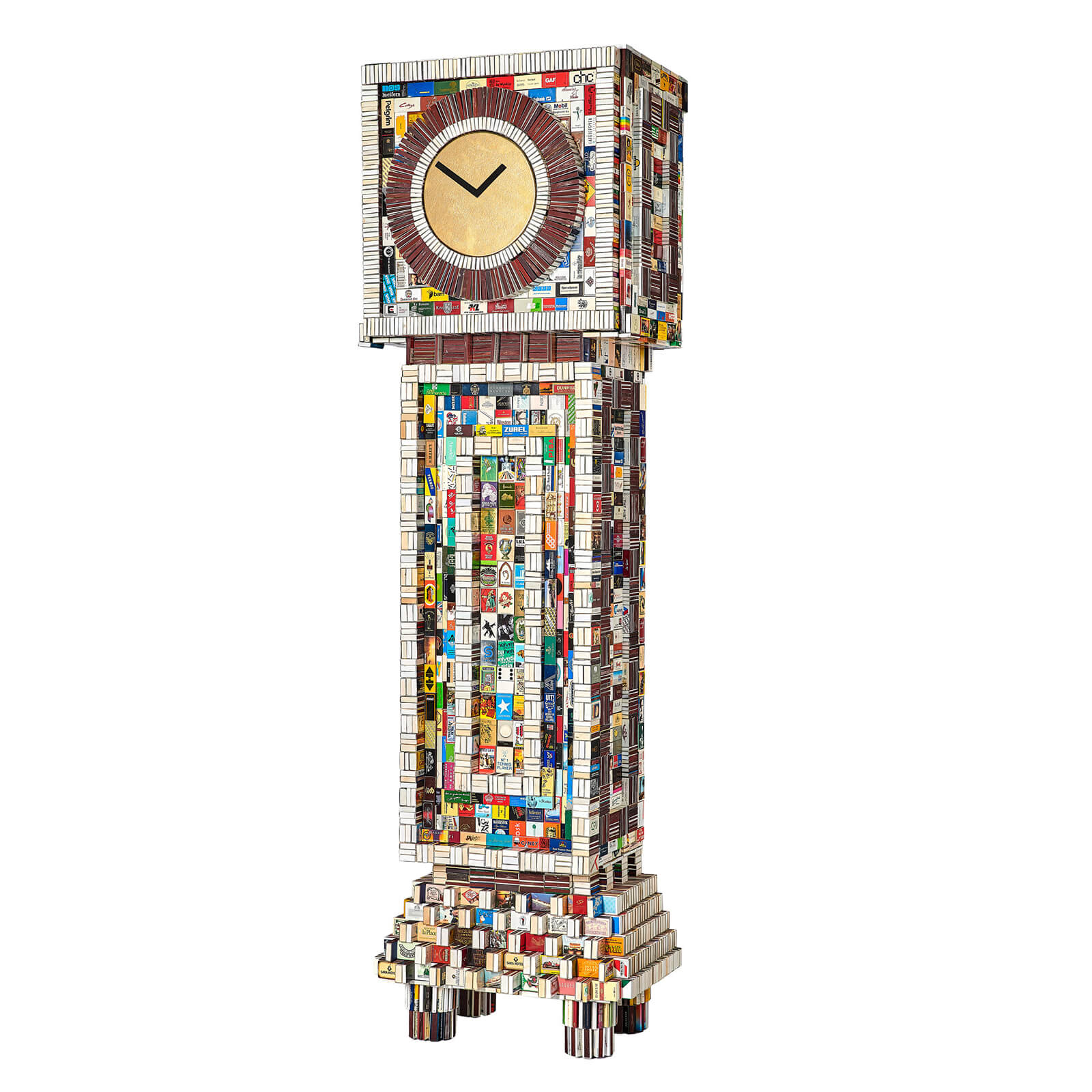
Diederik Schneemann, ‘Matchbox King Clock’, 2020
COURTESY: Rademakers Gallery, Amsterdam
Elsewhere, innovative ways of working with technologies and materials abounded. Todd Merrill from New York showed Marc Fish’s ‘Ethereal Series Lounge Chair, UK’ (2019), priced at $27,000, made from pouring a few millimetres of resin in between wavy, thin veneers of sycamore wood every day over a two-month-long period. The result is a feat of magical virtuosity. “Marc Fish is the only person to develop this painstakingly slow technique; it seems impossible to the eye that this could be achieved with wood,” Merrill says.
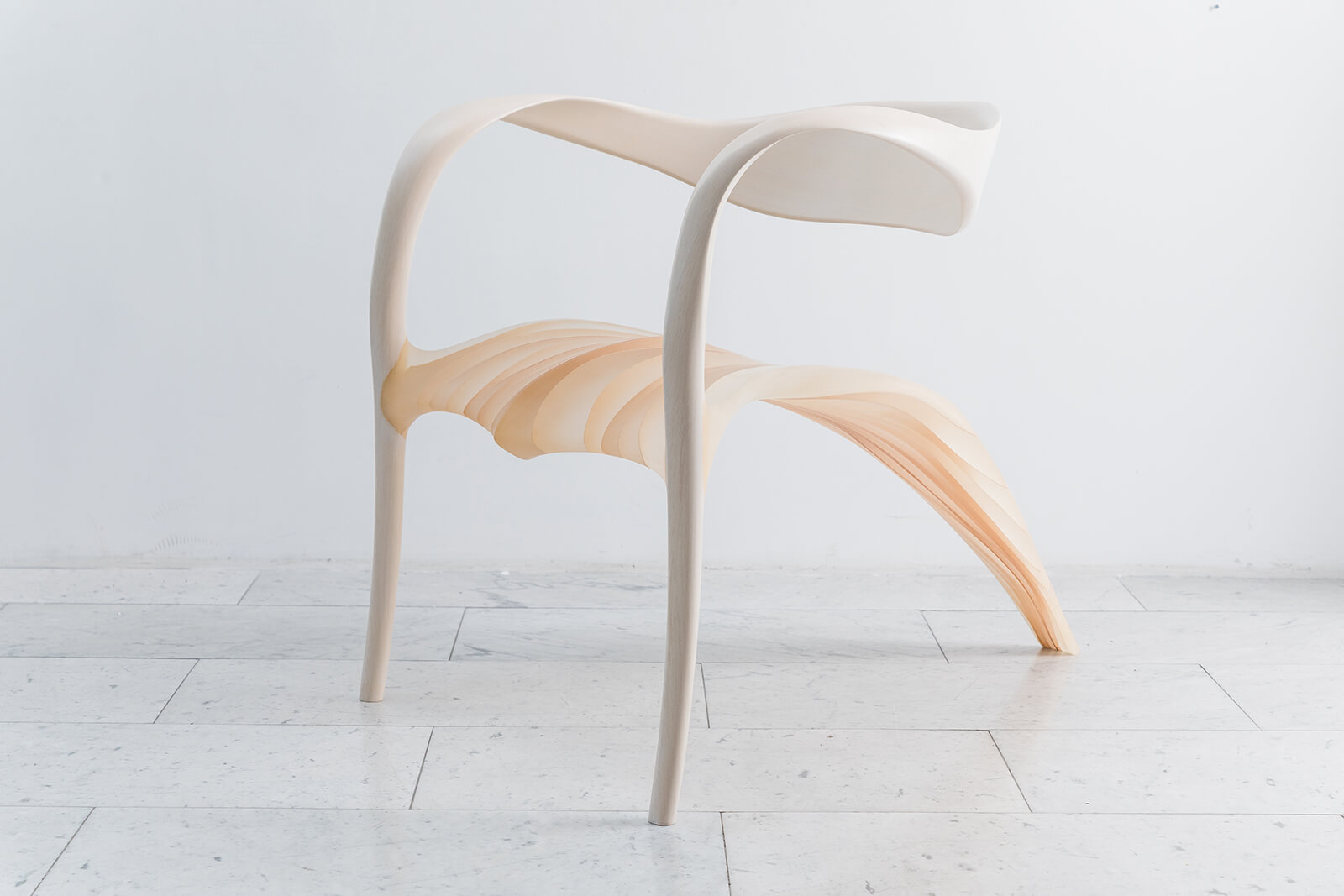
Marc Fish, ‘Ethereal Series Lounge Chair, UK’, 2019
COURTESY: Todd Merrill, New York
Equally intriguing on Merrill’s stand was fellow British artist Sophie Coryndon’s ‘Dossel Diptych No. 2’ (2018), $40,000, composed of two panels of cast Jesmonite honeycomb that have been gilded with 23.5 carat gold leaf. The casting of honeycombs and gilding of each hexagonal cell is a reflection on global warming. “It’s almost like a tapestry and has a textile quality,” Merrill says.
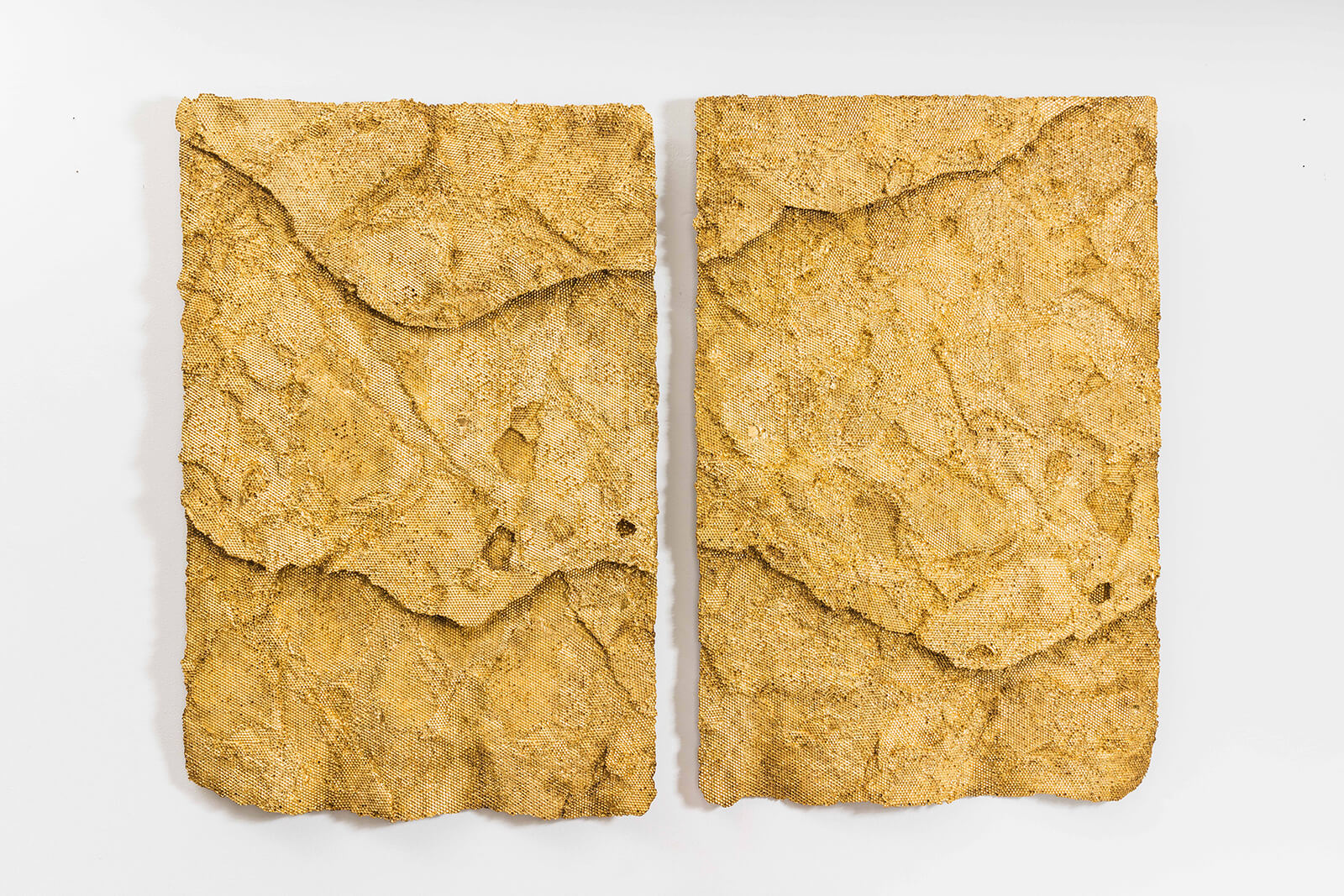
Sophie Coryndon, ‘Dossel Diptych No. 2’, 2018
COURTESY: Todd Merrill, New York
At DiSé from Sicily was a presentation of new works by eight designers, all produced in DiSé’s atelier, that was curated around the theme ‘Domestic Monuments’. Among them was ‘Groom’ (2019), €25,000, by OSΔOOS, the Eindhoven-based design duo Oskar Peet and Sophie Mensen. A gold, five panelled rectangular sculpture opens, thanks to manually rotating individual louvers, to reveal a concealed vanity cabinet. “You can use the shelves for objects like fragrance bottles and can close the piece so it becomes a sculpture,” Giampiero Corallo, director of DiSé, says.
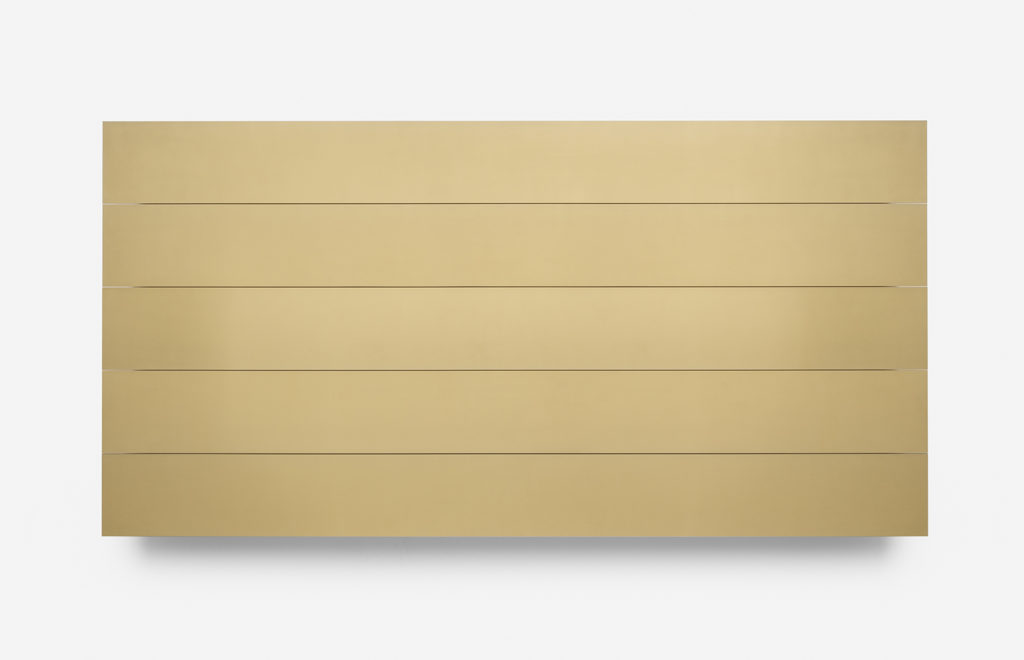
OSΔOOS, ‘Groom’, 2019
COURTESY: DiSé, Sicily
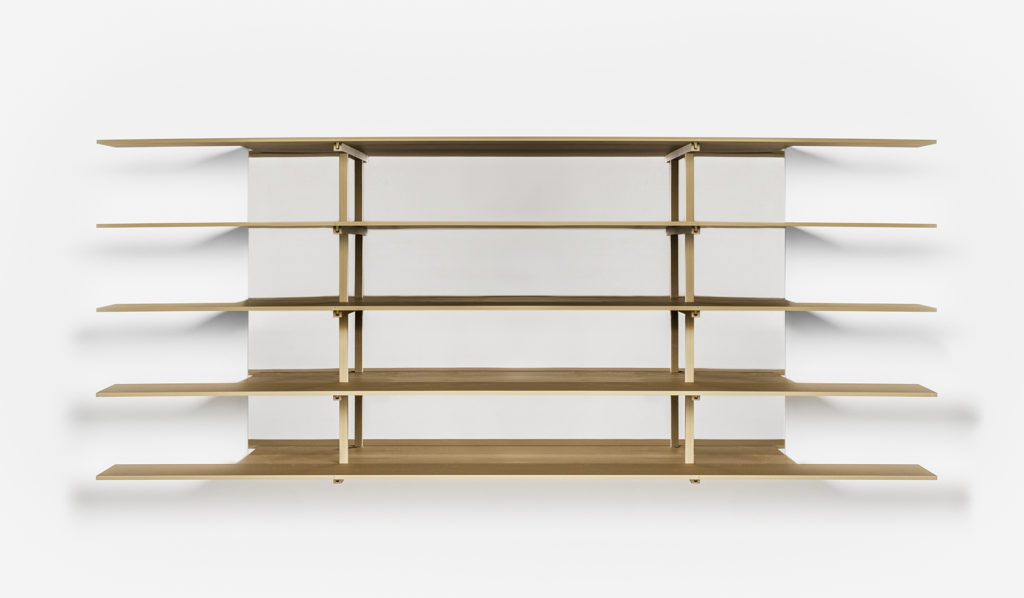
OSΔOOS, ‘Groom’, 2019
COURTESY: DiSé, Sicily
Also eye-catching at DiSé was Michael Schoner’s ‘Numen’ (2019), €33,000, a purplish, circular seating arrangement with a table and bench undulating over pale pink legs. The German architect/designer developed it after contemplating roundtable discussions.
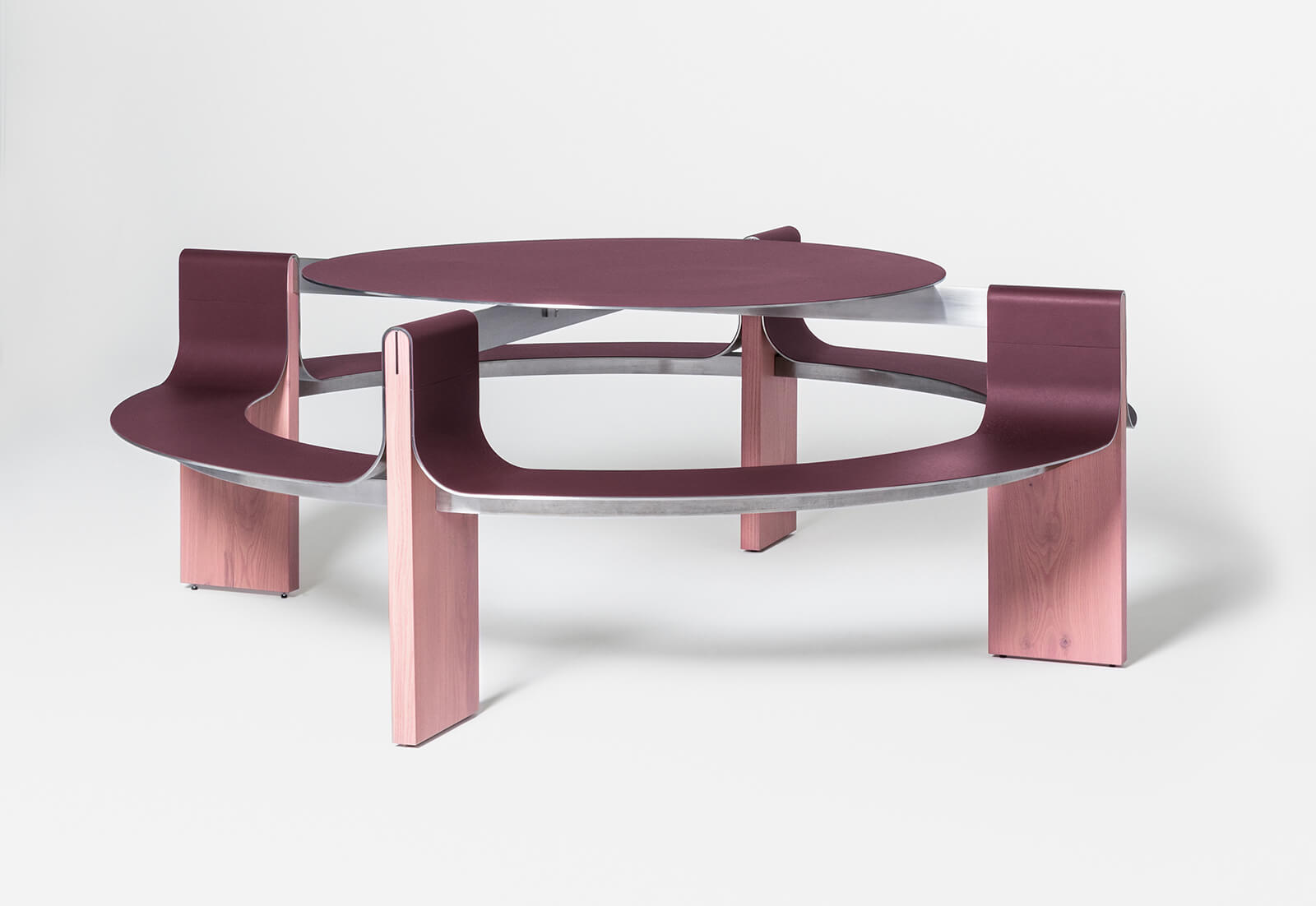
Michael Schoner, ‘Numen’, 2019
COURTESY: DiSé, Sicily
Another highlight was Muller Van Severen’s ‘Alltubes’ (2020) collection at Valerie Traan Gallery from Antwerp. On show were the Belgian duo Fien Muller and Hannes Van Severen’s cabinets, a bench and a chair all made from the repetitive use of round aluminium tubes. The conceptual collection is an exercise in how to stretch the potential of a mundane, stark material to rippling effect.
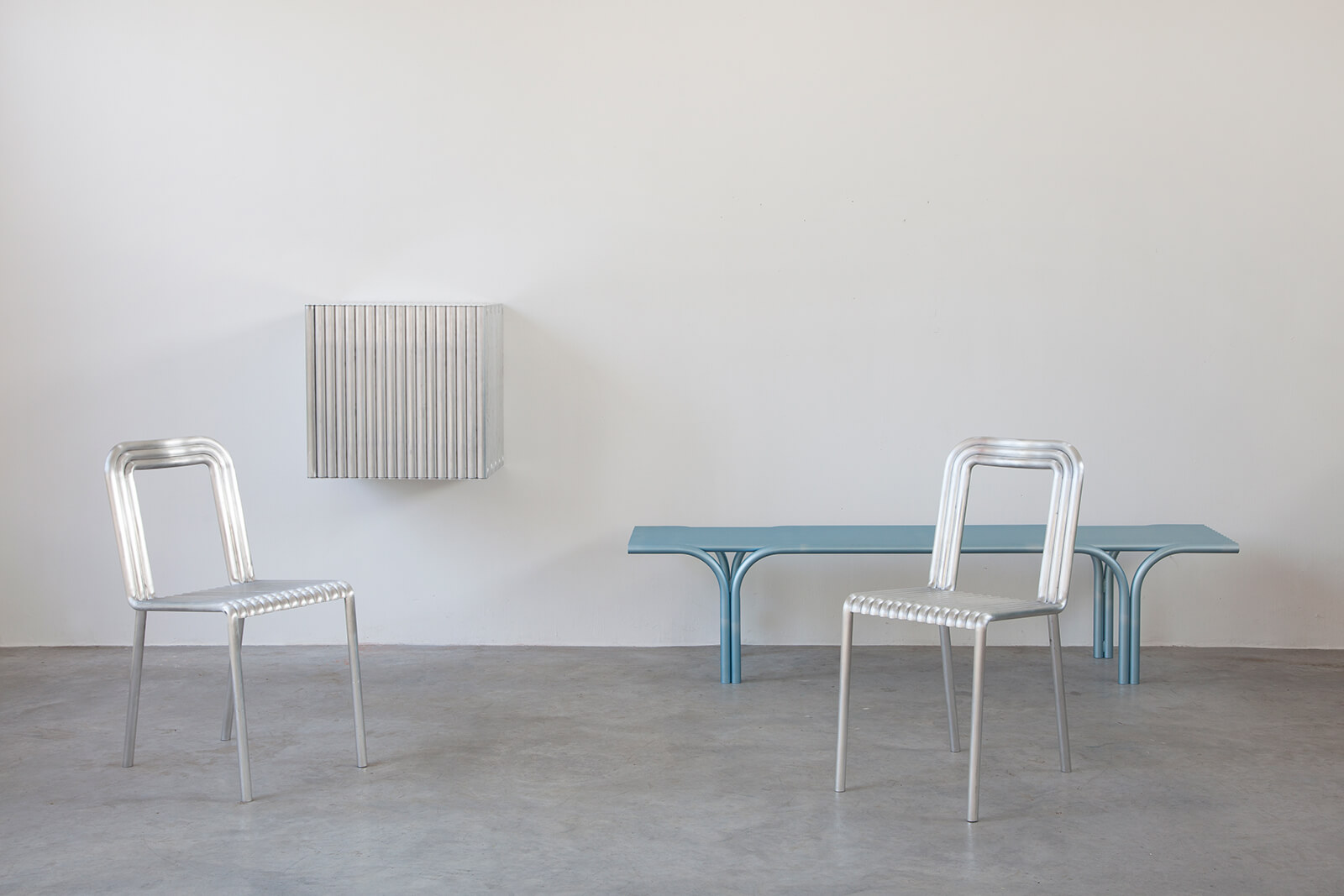
Muller Van Severen, ‘Alltubes’, 2020
COURTESY: Valerie Traan Gallery, Antwerp
A defining particularity of Collectible is the wide range of works by emerging designers, pointing to its reputation as a discovery fair for experimental design. Notable was the space dedicated to the many tenants of Zaventem Ateliers and, next door, the BRUT Collective, which included a staggered concrete structure by Bram Vanderbeke. Spazio Nobile from Brussels showed stools from Pao Hui Kao’s ‘Paper Pleats’ (2018-2019) collection. Kao is a young Taiwanese, Eindhoven-based designer who has created poetic pieces of furniture by combining countless sheets of tracing paper with glue; although they look as light as a feather, they are surprisingly sturdy.
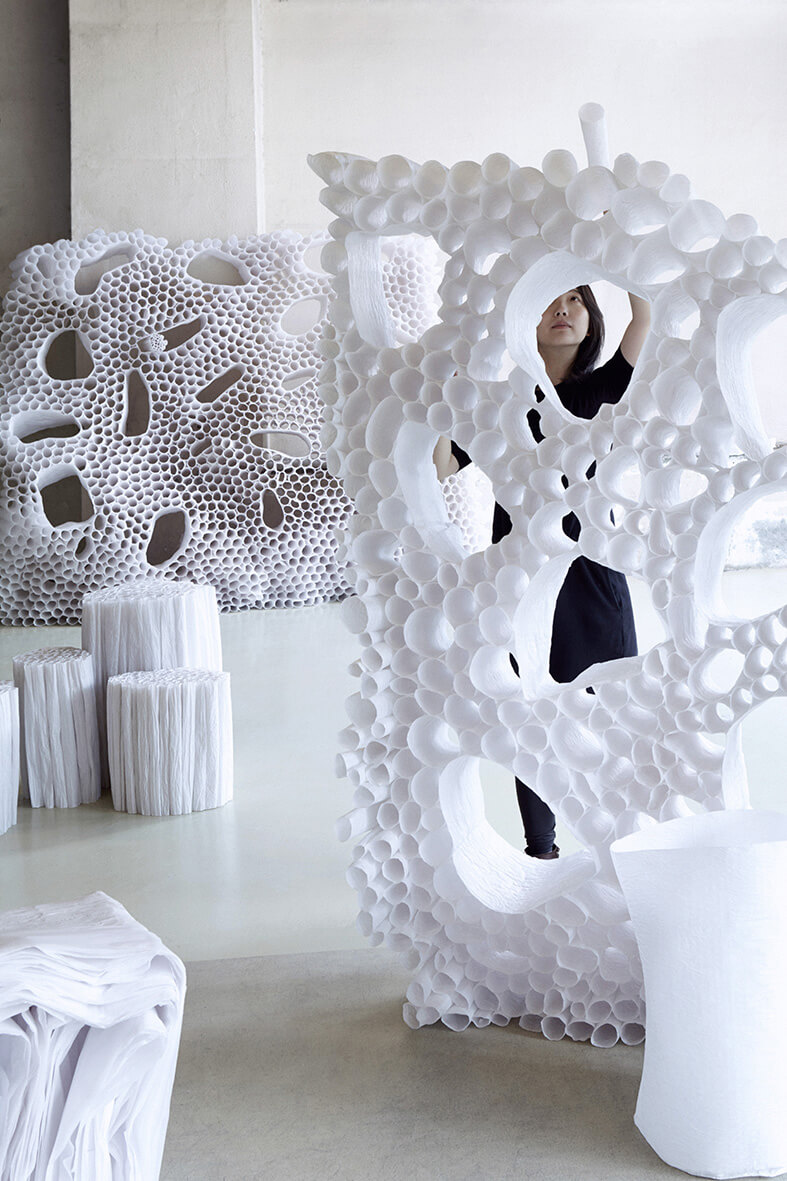
Pao Hui Kao, ‘Paper Pleats’ collection, 2018-2019
COURTESY: Spazio Nobile, Brussels
On the same stand, Japanese designer Jin Kuramoto’s ‘Bamboo Chair’ (2017), made by bending pieces of bamboo into sensuously curved ribbons, applies traditional craft skills in a highly refreshing way.
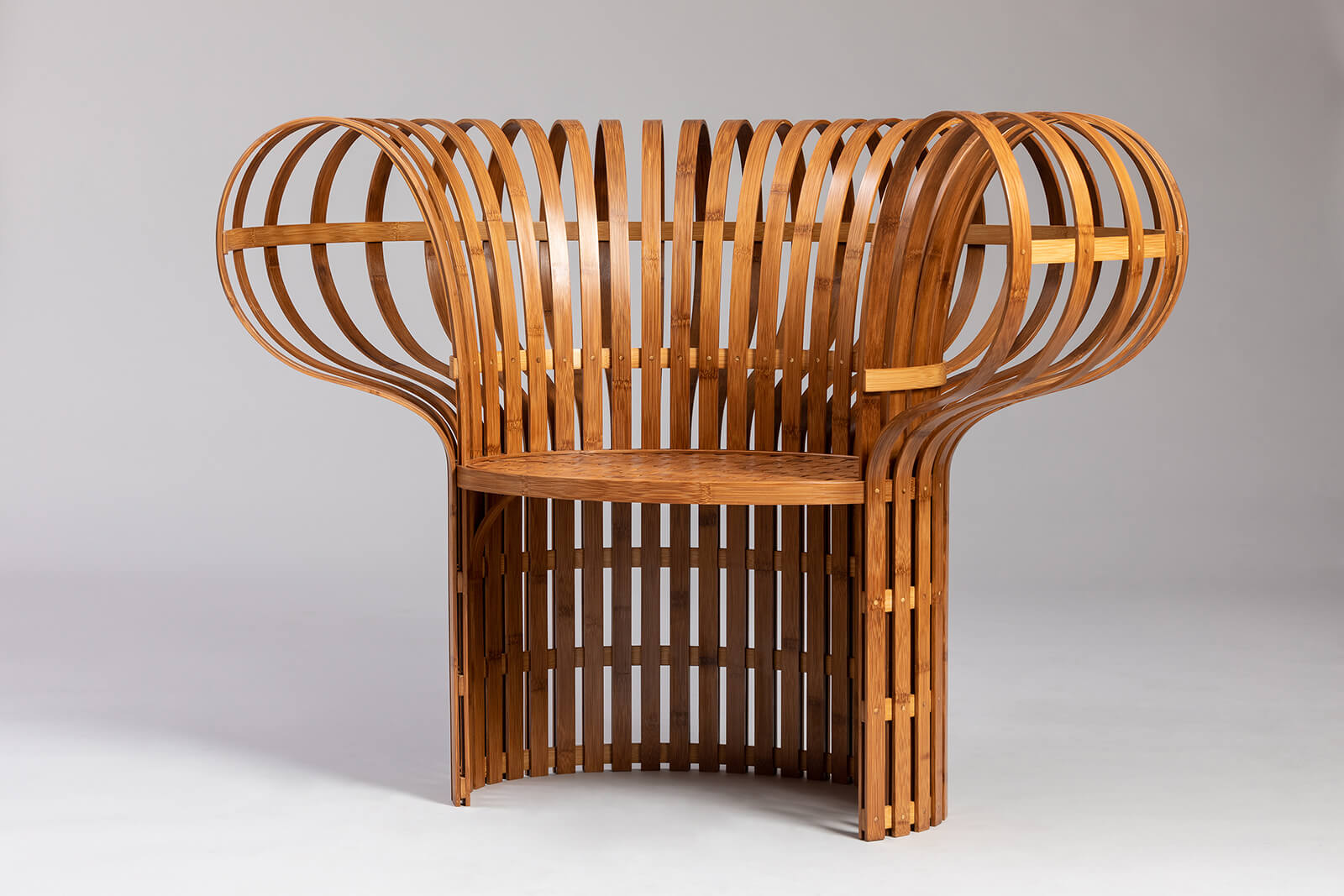
Jin Kuramoto, ‘Bamboo Chair’, 2017
COURTESY: Spazio Nobile, Brussels
It was the traditional western art of marquetry that was updated in Laurids Gallée’s pinewood table, ‘Floral Inferno’ (2018), on display at Fracas from Brussels. The young Austrian, Eindhoven-educated designer laser-cut the floral motif and filled in the shapes with a blaze of yellow, red, blue and black pigments. “He uses a very liquid ink and viscosity in the pigments that is applied to each part and then adds an acrylic varnish,” Romain Silvy, director of Fracas, says.

Laurids Gallée, ‘Floral Inferno’, 2018
COURTESY: Fracas, Brussels
Rene Siebum’s ‘Beam’ (2019) at Rauminhalt-Harald Bichler from Vienna also brought techniques of working with wood and craftsmanship into the 21st century. Over the course of many months, the Dutch designer sculpted the poplar ‘beam’, which becomes increasingly slender at its centre, so its form would resemble a dumbbell. Photo documentation on the wall records how the piece was sequentially created.
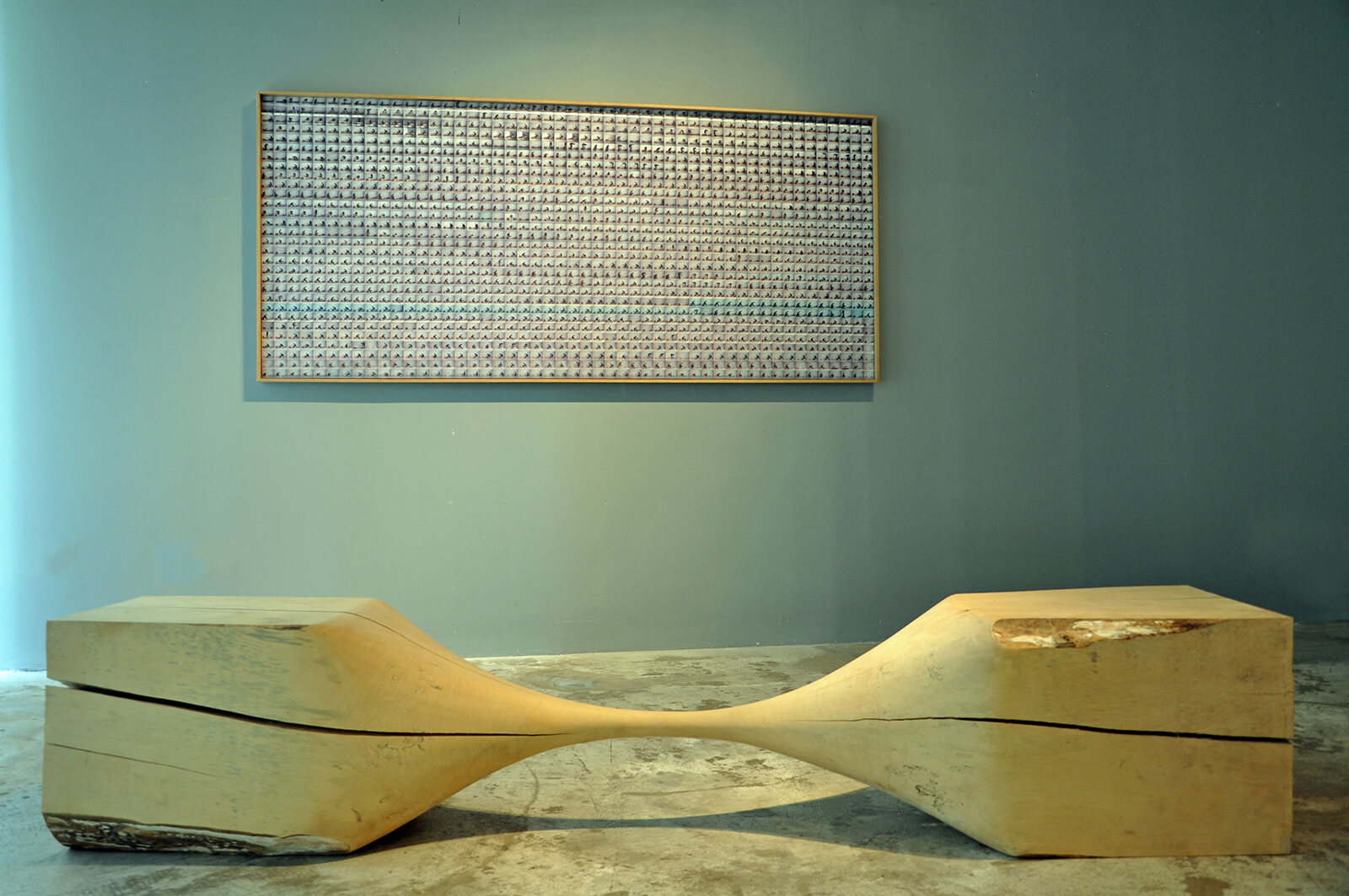
Rene Siebum, ‘Beam’, 2019
COURTESY: Rauminhalt-Harald Bichler, Vienna
What were Bichler’s thoughts on Collectible’s third edition? “I missed there not being guided tours with curators, collectors and friends of art and design but the atmosphere was really great and the building was fantastic,” he replies.
An interview with Bram Vanderbeke, a member of BRUT collective, before Collectible 2020
COURTESY: TDE TV
Collectible – a unique fair dedicated exclusively to 21st century contemporary collectible design.




